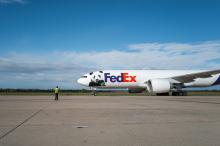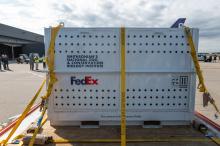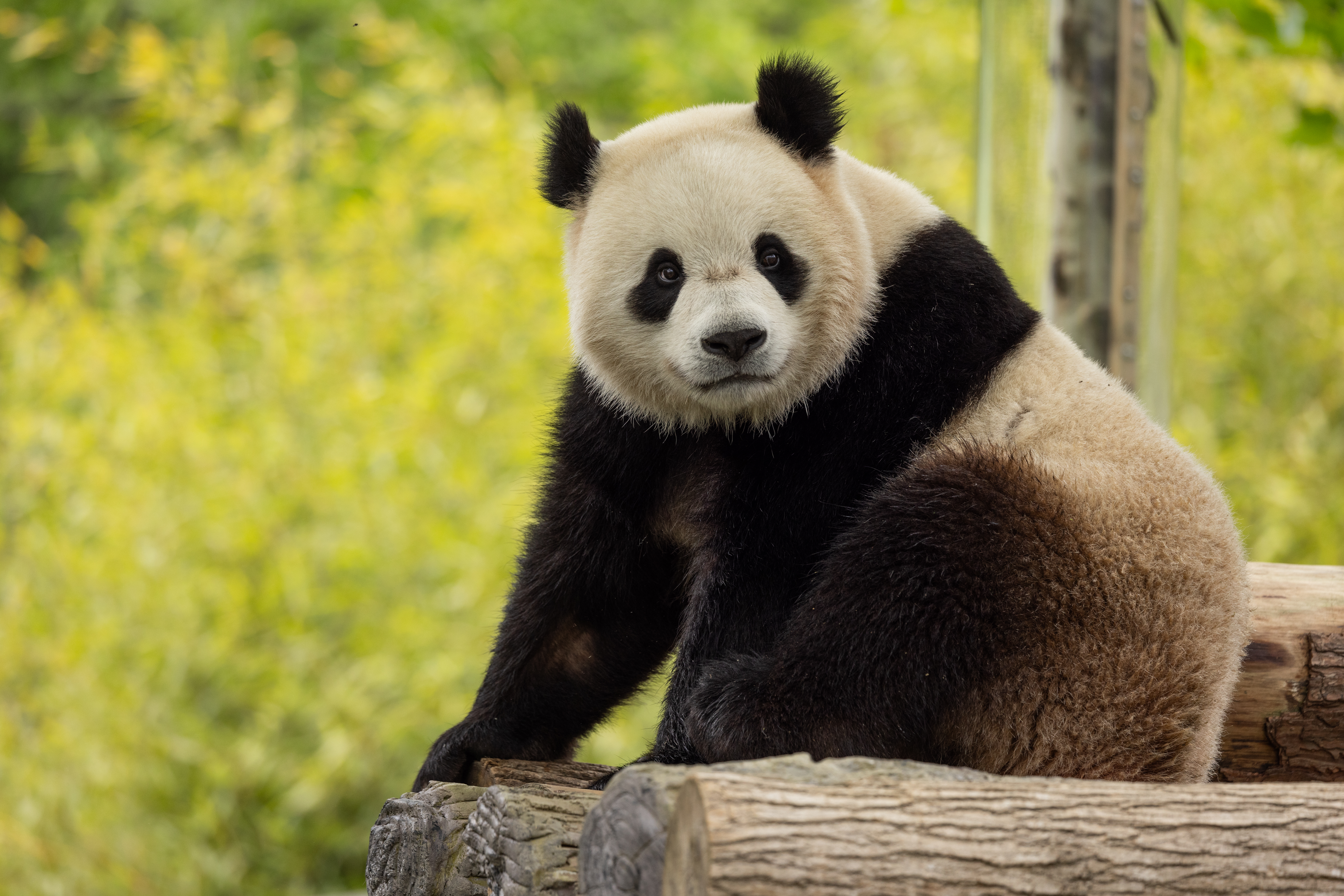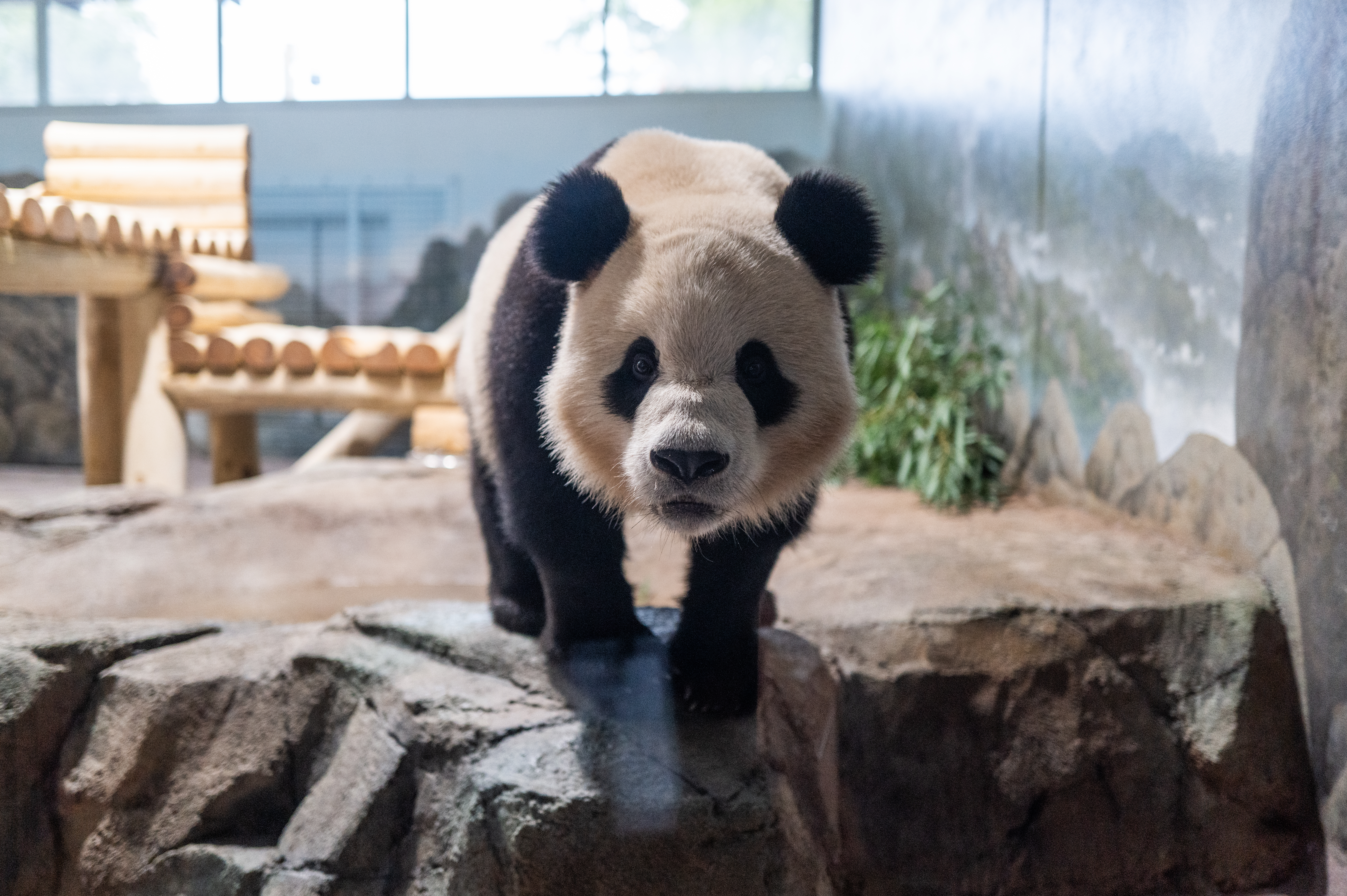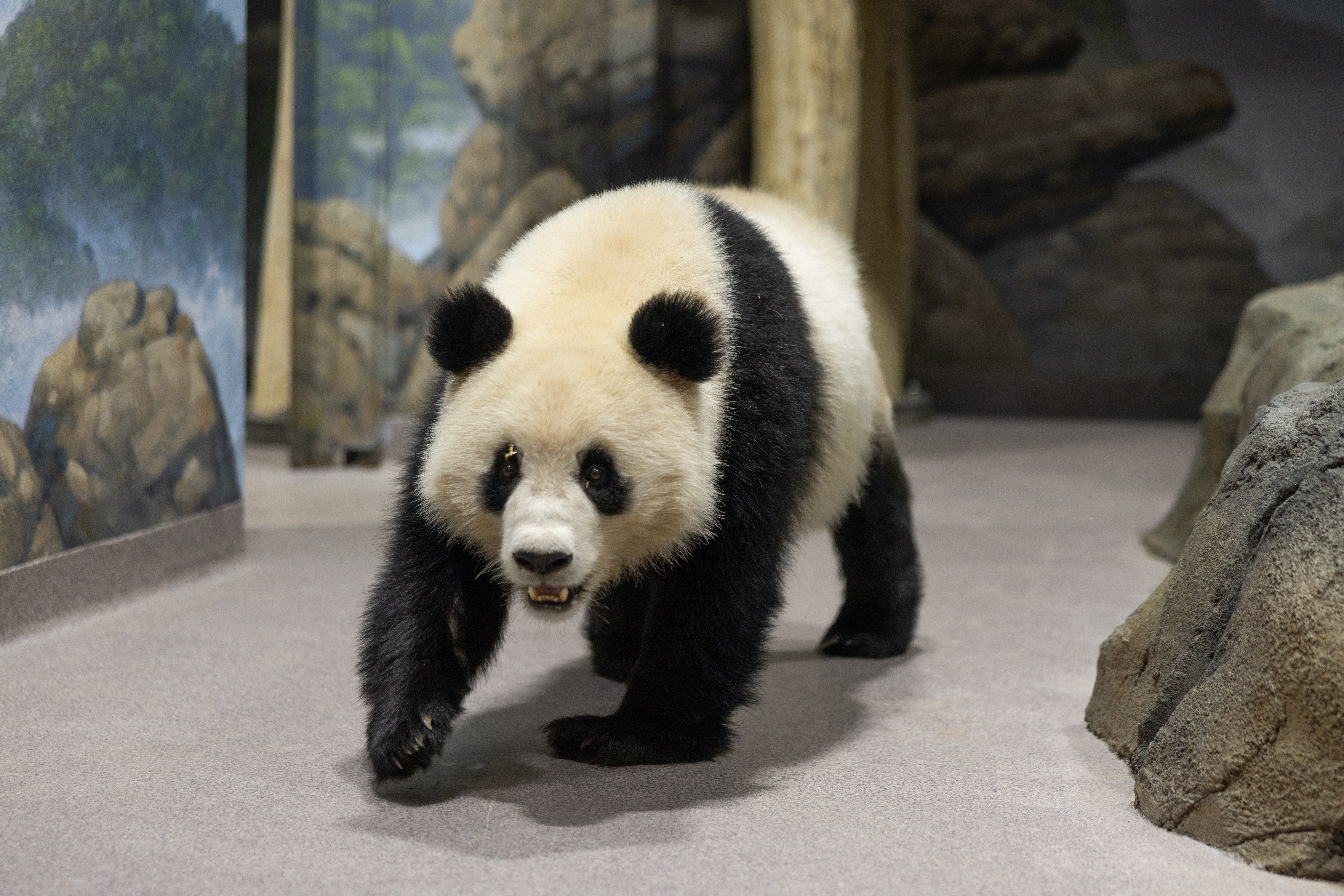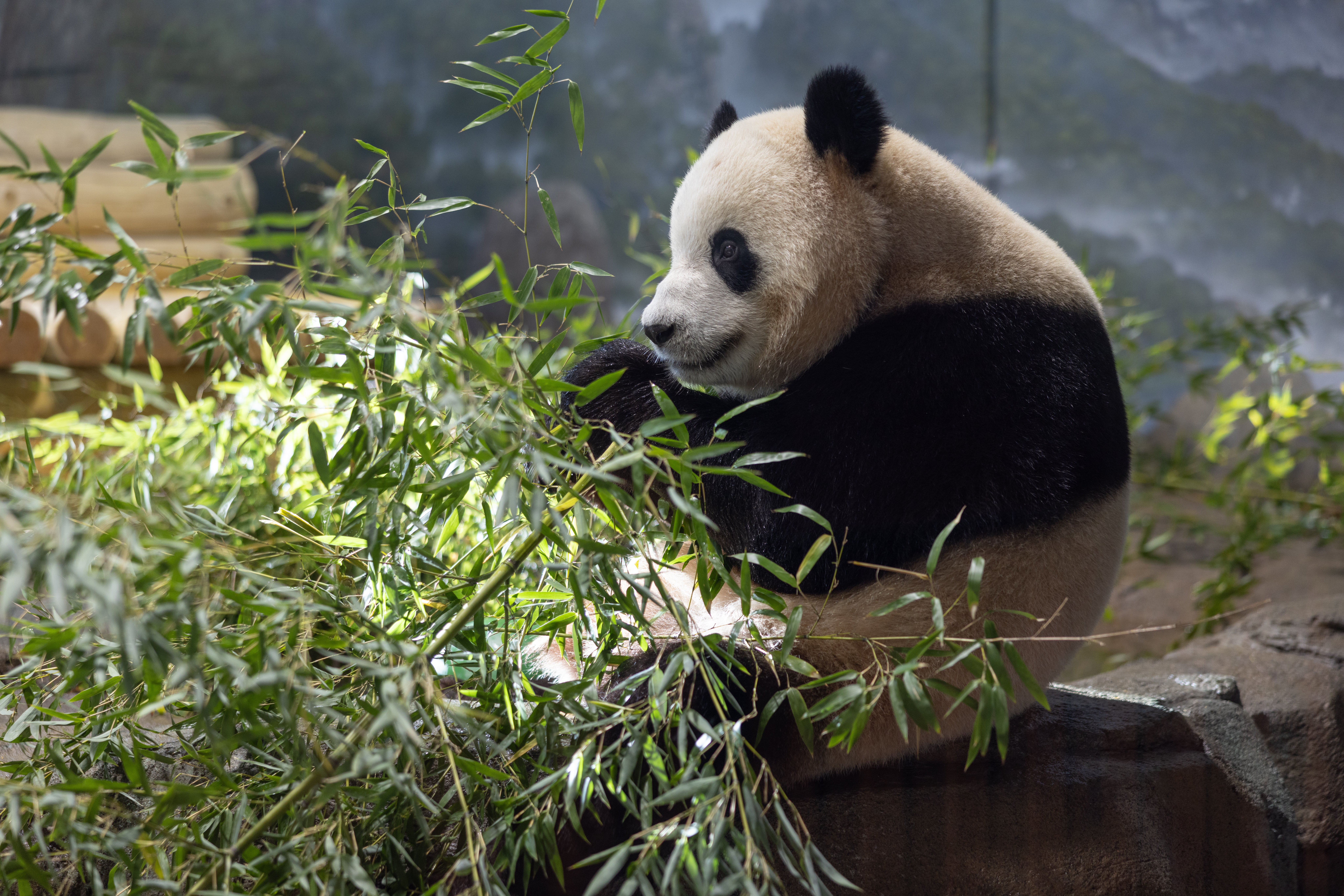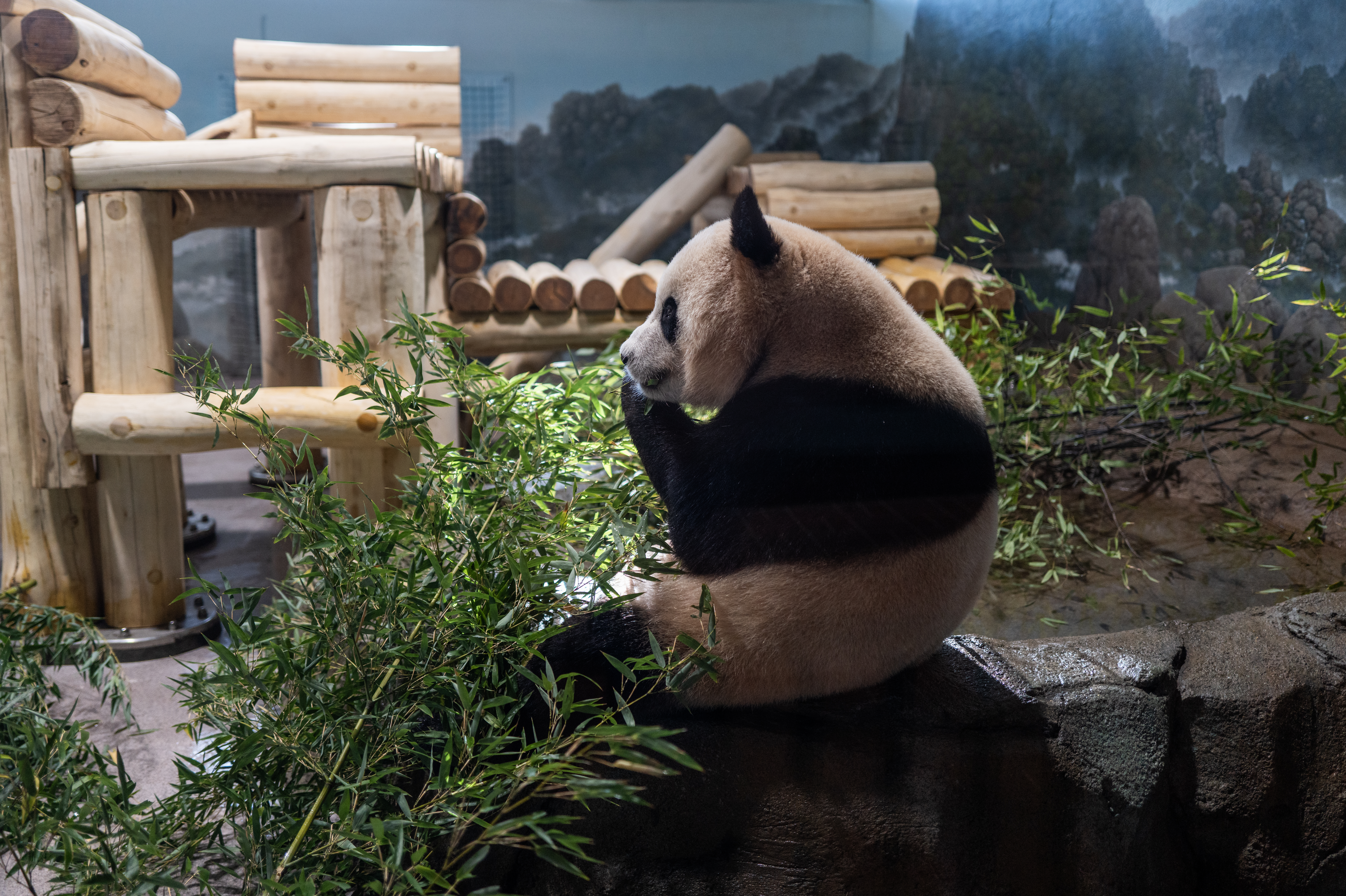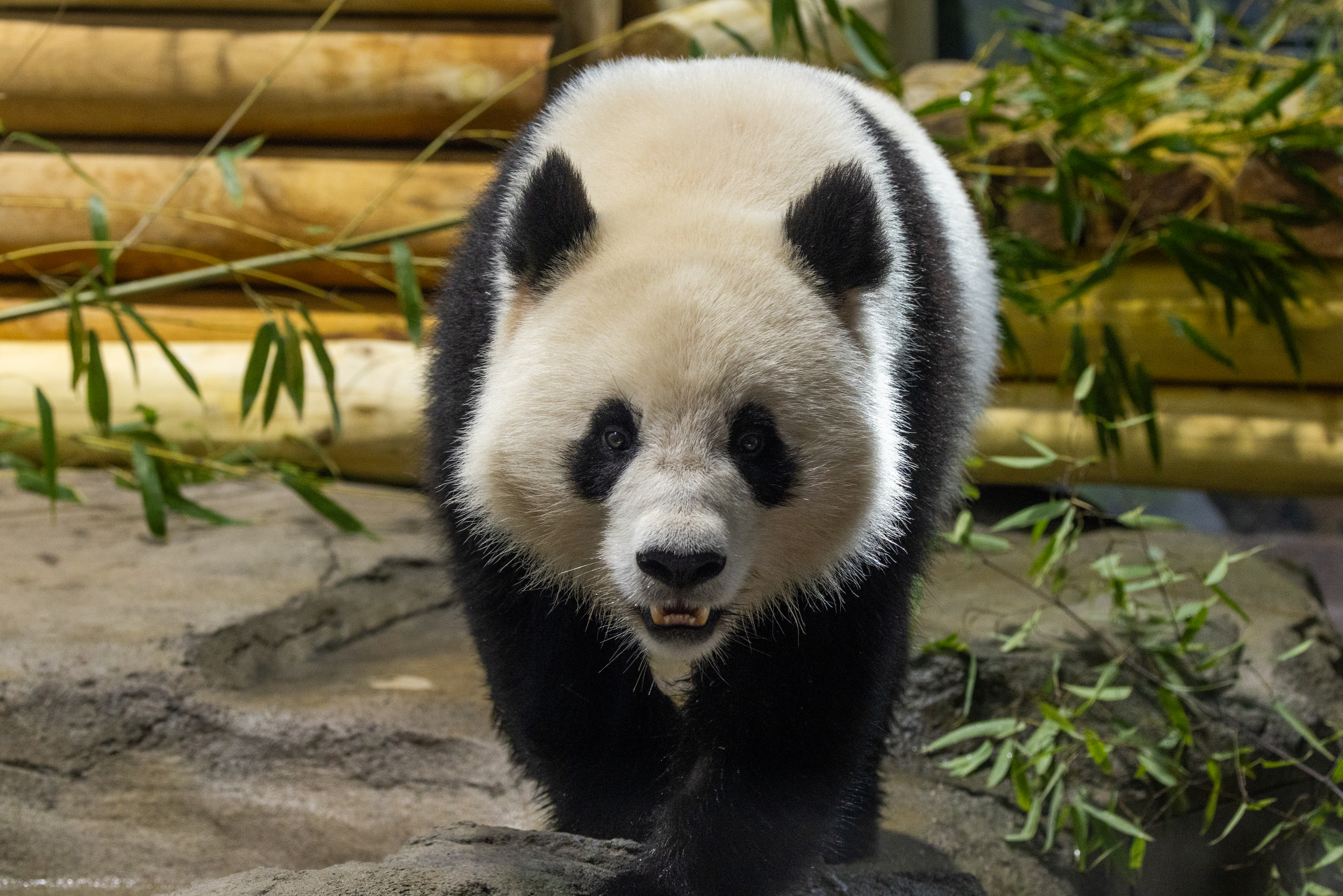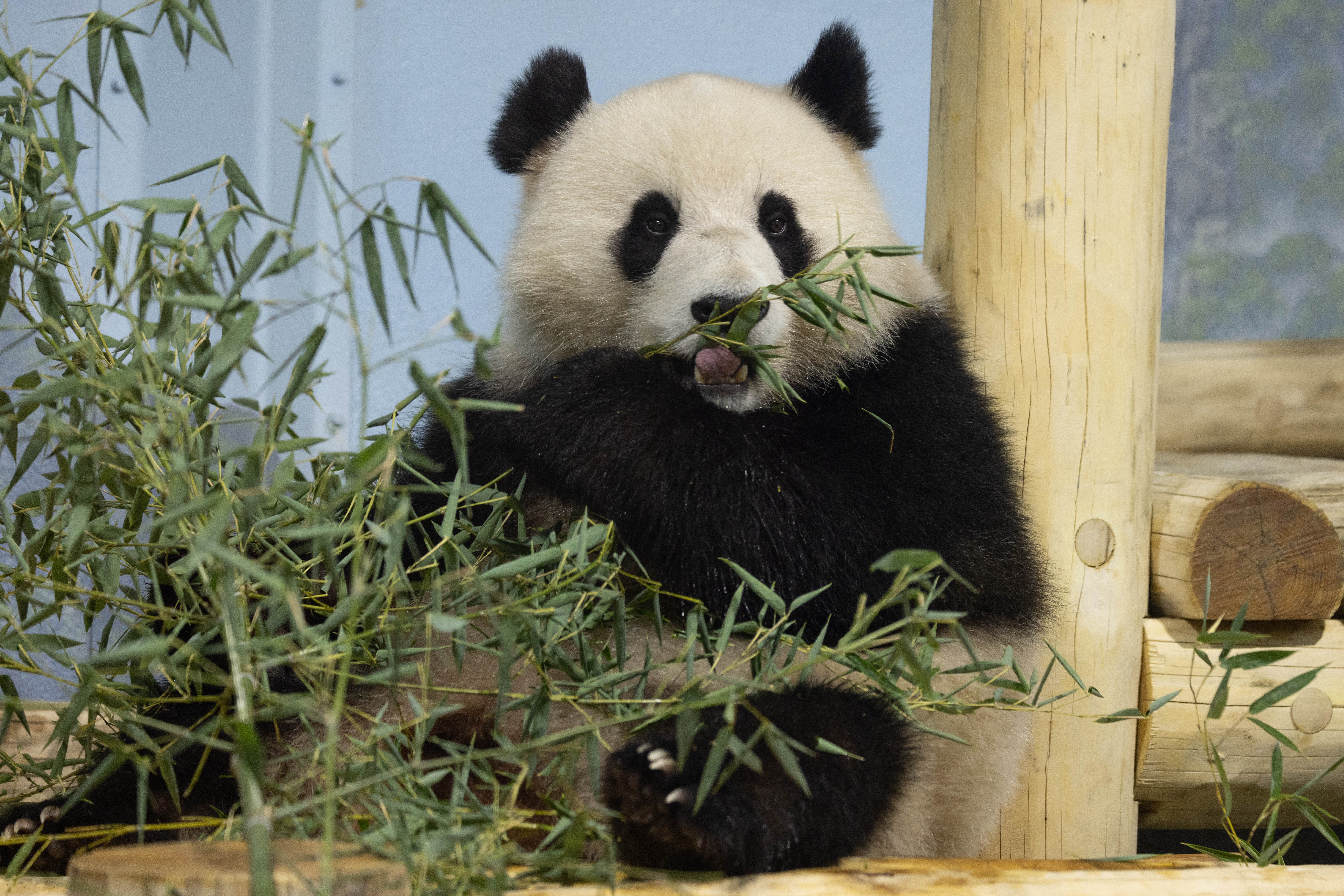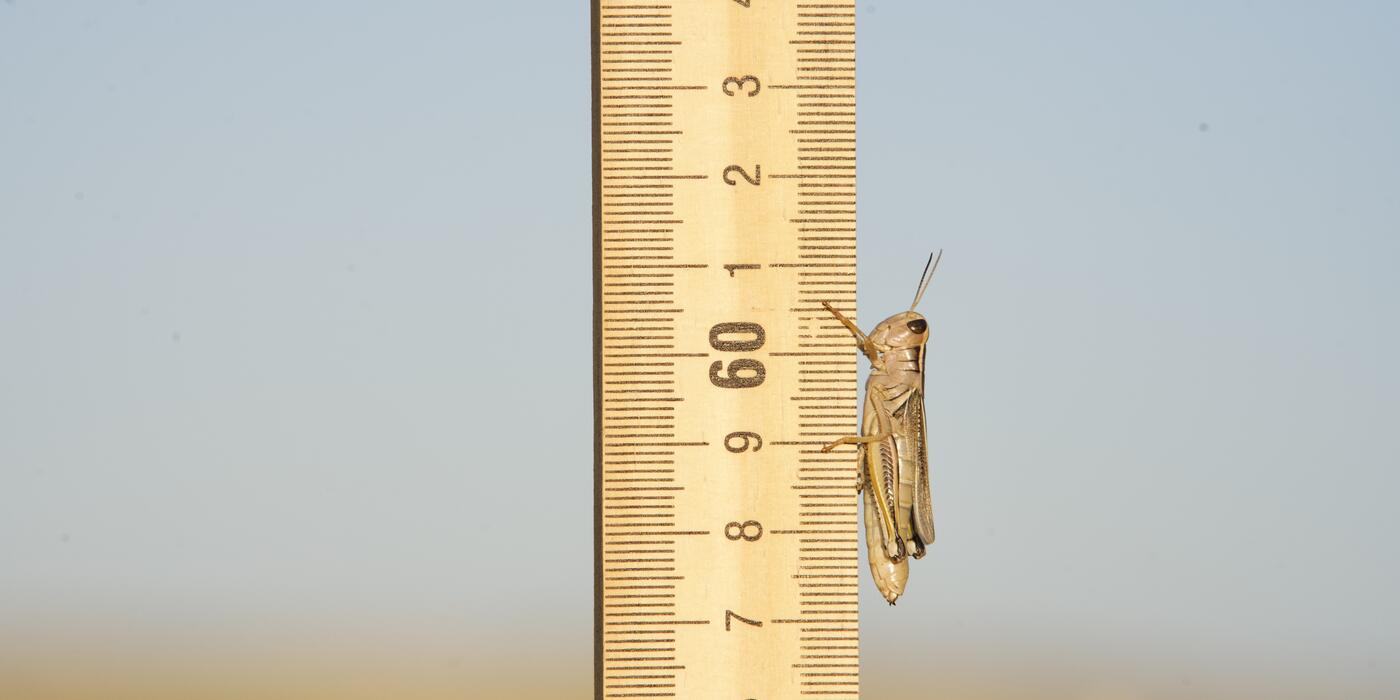Giant Pandas Arrive at Smithsonian’s National Zoo and Conservation Biology Institute From China
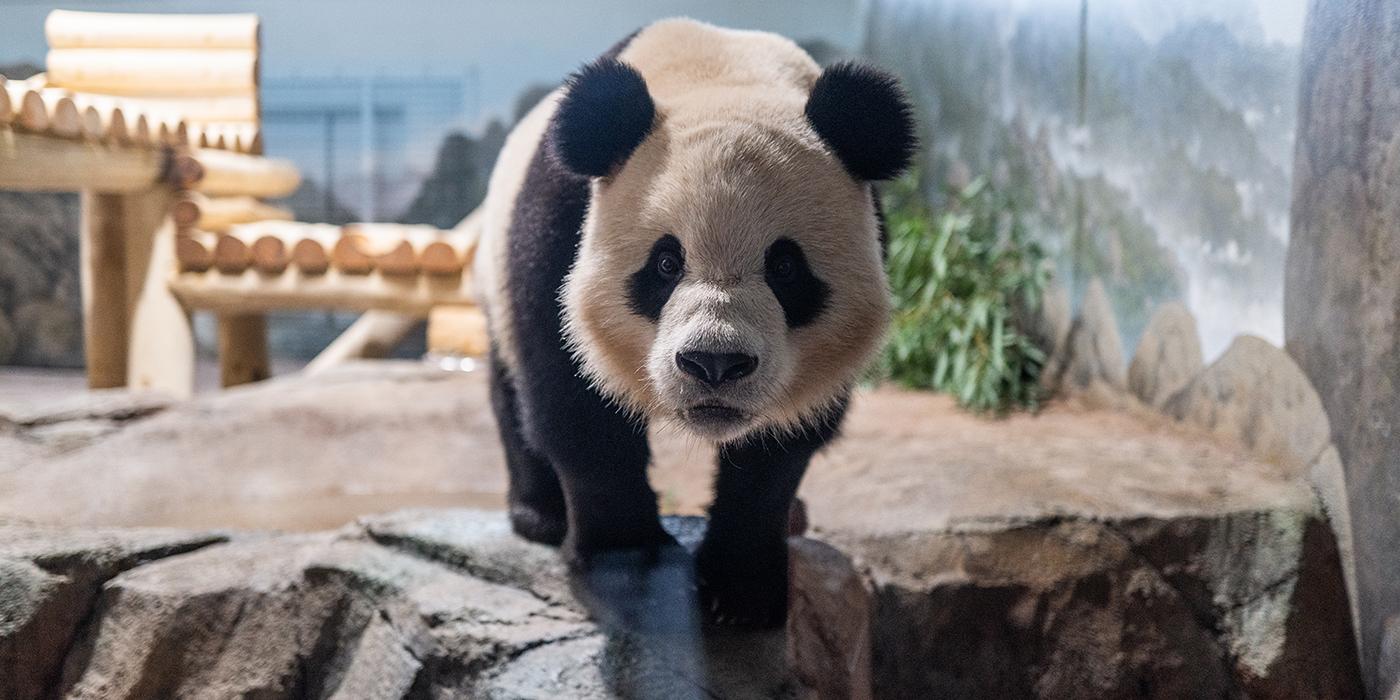
Bao Li and Qing Bao Will Make Their Public Debut Jan. 24, 2025
Video Description: Giant pandas Bao Li and Qing Bao disembark the FedEx "Panda Express" at Dulles International Airport Oct. 15, 2024. A forklift carefully carries a panda in its transport crate to its new habitat at Smithsonian’s National Zoo and Conservation Biology Institute. Male and female giant pandas Bao Li and Qing Bao in their Zoo habitats.
Video Credit: FedEx and Smithsonian's National Zoo and Conservation Biology Institute
Video caption: David M. Rubenstein Family Giant Panda Habitat Renovation in preparation for giant panda arrival. Video credit: Smithsonian's National Zoo and Conservation Biology Institute.
After months of planning and preparation, giant pandas Bao Li [BOW-lee] and Qing Bao [ching-BOW] arrived at the Smithsonian’s National Zoo and Conservation Biology Institute (NZCBI) today, Oct. 15, at approximately 11:30 a.m. ET. They began their journey early in the morning in China aboard a dedicated “FedEx Panda Express” Boeing 777F aircraft. The approximately 19-hour, 8,250-mile trans-Pacific trip from Chengdu, China, to Washington, D.C., included a brief refueling stop in Anchorage, Alaska. The flight arrived at Dulles International Airport in Northern Virginia at 9:52 a.m. EDT, where the pandas were loaded onto FedEx trucks before heading to the Zoo.
Upon the bears’ arrival at the Zoo, their crates were moved one by one onto a forklift that traveled carefully to their new home at the David M. Rubenstein Family Giant Panda Habitat. The animal care team reported that Bao Li and Qing Bao exited their crates and began exploring their new indoor enclosures, in which keepers placed ample bamboo for the bears to eat.
“Our team has worked tirelessly to prepare for the pandas’ arrival, and we’re thrilled to welcome Bao Li and Qing Bao to Washington, D.C., the only place you can see giant pandas for free in the nation,” said Brandie Smith, the John and Adrienne Mars Director of NZCBI. “I am appreciative of our Chinese colleagues for our collaborative conservation and research efforts, to FedEx for providing them with safe transportation and to our donors and members whose philanthropic contributions makes our giant panda conservation program possible. As a result of our collective efforts, today we joyfully celebrate a new chapter of our 52-year-long giant panda breeding and conservation program.”
“The safe delivery of Bao Li and Qing Bao to the U.S. demonstrates our commitment to leveraging the extensive FedEx global network to connect communities,” said Richard W. Smith, chief operating officer, International, and chief executive officer, Airline, FedEx. “We are honored to once again serve as the trusted transportation provider and are proud to deliver this precious cargo aboard the FedEx Panda Express.”
NZCBI animal keepers Mariel Lally and Trish Jarvis and NZCBI supervisory veterinary medical officer Dr. James Steeil traveled aboard the FedEx Panda Express and continuously monitored Bao Li and Qing Bao during the trip to ensure their journey was safe and comfortable. Earlier this month, Lally, Jarvis, Steeil and NZCBI assistant curator of giant pandas Laurie Thompson traveled to China to meet the pandas and their keepers. They observed how the pandas interacted with their environment and learned valuable insights into their demeanor and the cues and signals used during husbandry training sessions.
There are many similarities between the China Conservation and Research Center for Giant Pandas and NZCBI’s husbandry training programs, and Chinese keeper Kai Wu and veterinarian Linhua Deng will work alongside the Zoo’s panda team for a few weeks to help the pandas acclimate. NZCBI staff noted Bao Li and Qing Bao’s dispositions were curious and energetic, and they seemed to enjoy interacting with keepers. Smith also traveled to China to meet with Chinese partners and participate in a farewell ceremony for Bao Li and Qing Bao held Oct. 14 in Dujiangyan.
Panda Quarantine and Preparation
Per standard procedure, the pandas will be quarantined in the panda house for a minimum of 30 days. Quarantine of new animals is a routine practice in zoos accredited by the Association of Zoos and Aquariums to reduce risk of introducing parasites or disease to other animals. During this period, they will have access to enclosures inside the panda house. A team of keepers, nutritionists and veterinarians will care for them the entire time. Animal care staff will provide the pandas with a variety of enrichment items to keep them active and encourage them to explore their new environment.
Starting today, access to the David M. Rubenstein Family Giant Panda Habitat, Bird House and Asia Trail will be closed and will remain closed to the public until Bao Li and Qing Bao make their public debut Jan. 24, 2025. Given the immense public interest and excitement surrounding the announcement that the new bear pair would arrive before the end of 2024, the Zoo is preparing to welcome thousands of visitors daily. NZCBI is working to ramp up operations during what is, traditionally, an off-peak visitation period.
During this period, limited groups including Zoo staff, volunteers, members and other stakeholders will have an opportunity to visit the pandas and help them get used to the sights, sounds and smells of crowds ahead of their public debut. Smithsonian National Zoo members will be invited to help the bears acclimate during a 10-day preview period from Jan. 10 to 19, 2025. Reservations are required to participate. Members can reserve free timed-entry passes for the giant panda preview beginning mid-December. From Jan. 29 to Feb. 9, the Zoo will host a public celebration with a series of special events and programs, including a Lunar New Year event. No reservations are required for the public celebration.
While Bao Li and Qing Bao are off-exhibit and acclimating to their new habitat, fans can stay connected to the bear pair by following #DCPandas and tuning in to “Prepping for Pandas.” Launching tomorrow, Oct. 16, on the Zoo’s social media channels and website, this original, short-form digital series brings viewers behind the scenes for a look at how the panda team—individuals ranging from animal care experts to architects, conservation researchers and transportation provider FedEx—worked together to get the pandas’ Washington residence ready to receive them. Each episode of this nine-part bi-weekly series highlights special moments and milestones of the new pandas’ journey to their public debut.
Giant Panda Cam
The Zoo will relaunch the Giant Panda Cam once Bao Li and Qing Bao make their public debut Jan. 24, 2025, ensuring virtual visitors can join in the celebration and welcome these animal ambassadors to Washington. The Giant Panda Cam is composed of 40 cameras operated from a central system by a corps of specially trained volunteers. As part of this upgrade, all cameras, three console machines and the monitors in the cam operating room have been replaced. The webcams will broadcast from 7 a.m. to 7 p.m. ET. After 7 p.m., the day’s recording will be rebroadcast to ensure virtual visitors around the world can view the animals at their most active.
Background
On May 29, NZCBI announced a new 10-year cooperative giant panda research and breeding agreement signed by Smith and Wu Minglu, secretary general of the China Wildlife Conservation Association (CWCA). The terms of the new agreement stipulate NZCBI and partners in China will conduct cooperative research projects in China and at the Zoo in Washington. In line with all zoos outside of China that care for and exhibit giant pandas, NZCBI will pay a $1 million annual fee to the CWCA in support of these projects. Federal funding will not be used and has never been used to pay this fee. Federal funding covers NZCBI’s essential animal care expenses such as food, medicine, animal care staff and facilities maintenance. The remainder of NZCBI’s operating budget, including the giant panda conservation program, comes from the support of Zoo visitors, members and donors.
NZCBI’s $25 million campaign to fund the giant panda conservation program is part of the Smithsonian Campaign for Our Shared Future—a combined effort that is securing funds for all Smithsonian museums, libraries, education, outreach and research centers and the National Zoo in support of a single, bold vision: to build a better future for all. Inspired by the campaign, David M. Rubenstein, co-founder and co-chairman of The Carlyle Group, and Adrienne Arsht, business leader and philanthropist, have pledged $10 million and $2 million, respectively, toward NZCBI’s giant panda conservation program. Their gifts will support the Zoo habitat renovation and efforts by Smithsonian and Chinese partners to innovate new techniques, pursue panda health and welfare research and expand work critical to the conservation of giant pandas in the wild.
Beginning Oct. 15, the Smithsonian invites panda fans to shop online for a selection of limited-edition merchandise commemorating Bao Li and Qing Bao’s arrival. Proceeds directly support the Smithsonian and NZCBI’s animal care and conservation programs.
To follow the latest news about NZCBI’s panda program, visit the Zoo’s website, subscribe to its e-newsletter, and follow on Facebook, Instagram, YouTube and X using the hashtag #DCPandas.
About the Smithsonian’s National Zoo and Conservation Biology Institute
The Smithsonian’s National Zoo and Conservation Biology Institute (NZCBI) leads the Smithsonian’s global effort to save species, better understand ecosystems and train future generations of conservationists. Its two campuses are home to some of the world’s most critically endangered species. Always free of charge, the Zoo’s 163-acre park in the heart of Washington features 2,200 animals representing 400 species and is a popular destination for children and families. At the Conservation Biology Institute’s 3,200-acre campus in Virginia, breeding and veterinary research on more than 250 animals representing 20 species provide critical data for the management of animals in human care and valuable insights for conservation of wild populations. NZCBI’s more than 300 staff and scientists work in Washington, Virginia and with partners at field sites across the United States and in more than 30 countries to save wildlife, collaborate with communities and conserve native habitats. NZCBI is a long-standing accredited member of the Association of Zoos and Aquariums.
# # #
Photo Credit: Roshan Patel, Smithsonian's National Zoo and Conservation Biology Institute.
Photo Credit: Skip Brown, Smithsonian's National Zoo and Conservation Biology Institute.
Related Species:
Image Gallery


